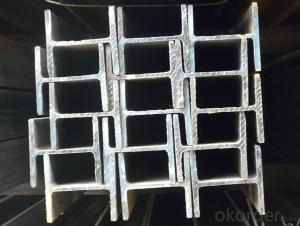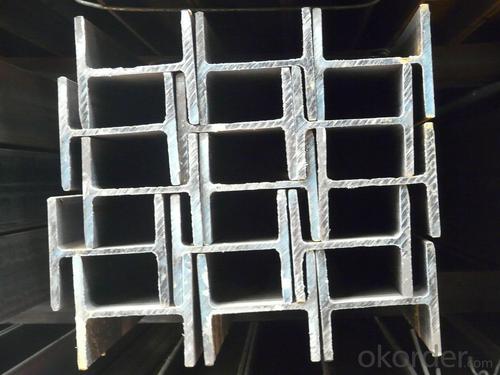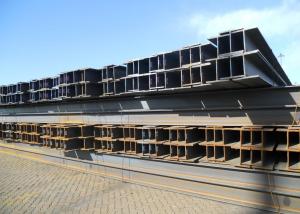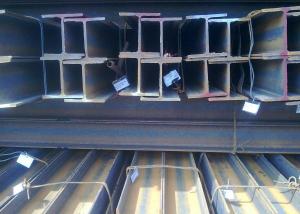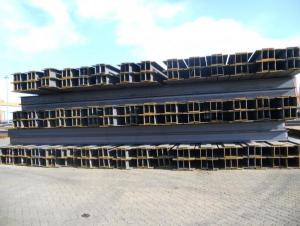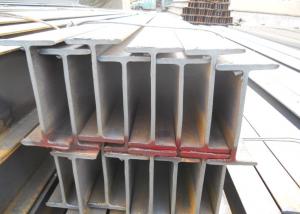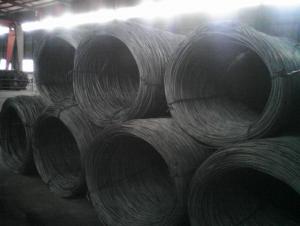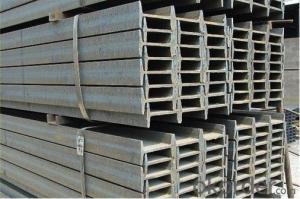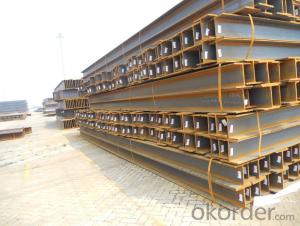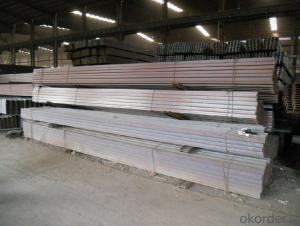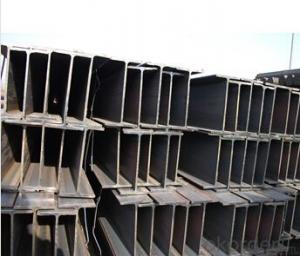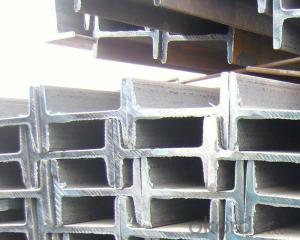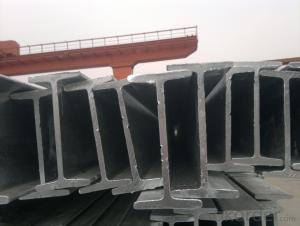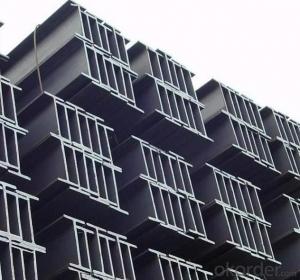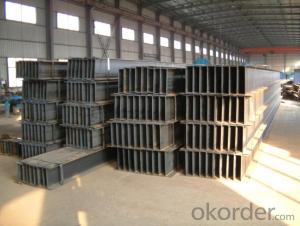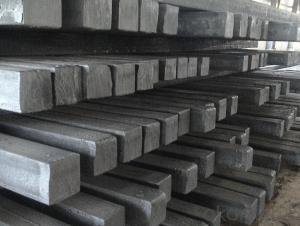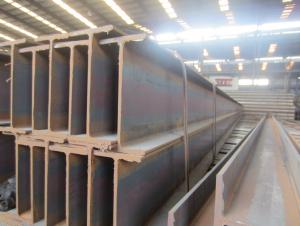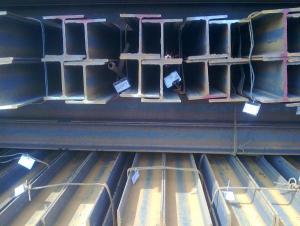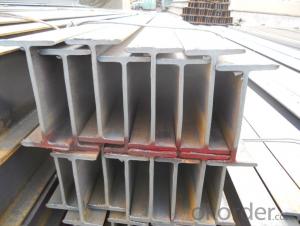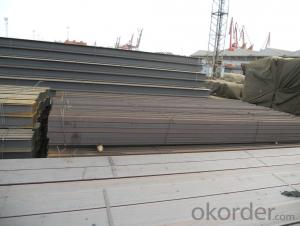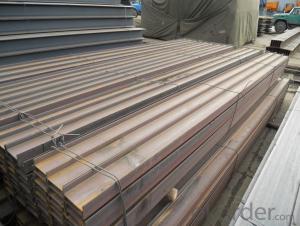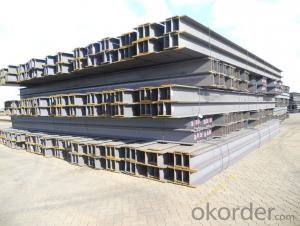GB Q235 Steel H Beam with High Quality 194*150*6.0mm
- Loading Port:
- China main port
- Payment Terms:
- TT or LC
- Min Order Qty:
- 40 m.t
- Supply Capability:
- 15000 m.t/month
OKorder Service Pledge
OKorder Financial Service
You Might Also Like
Specifications of GB Q235 Steel H Beam with High Quality 194*150*6.0mm For Sale:
1. Standard: GB Standard
2. Grade: Q235
3. Length: 12m
Size:
| Size (mm) | Mass (Kg/m) | Size (mm) | Mass (Kg/m) |
| 150*150*7.0 | 31.1 | 200*100*5.5 | 20.9 |
| 198*99*4.5 | 17.8 | 194*150*6.0 | 29.9 |
Usage & Applications of GB Q235 Steel H Beam with High Quality 194*150*6.0mm For Sale:
Commercial building structure ;Pre-engineered buildings; Machinery support structure; Prefabricated structure; Medium scale bridges; Ship-building structure.etc.
Production flow of GB Q235 Steel H Beam with High Quality 194*150*6.0mm For Sale:
Material prepare (billet) —heat up—rough rolling—precision rolling—cooling—packing—storage and transportation
FAQ:
Q1: Why buy Materials & Equipment from OKorder.com?
A1: All products offered byOKorder.com are carefully selected from China's most reliable manufacturing enterprises. Through its ISO certifications, OKorder.com adheres to the highest standards and a commitment to supply chain safety and customer satisfaction.
Q2: How do we guarantee the quality of our products?
A2: We have established an advanced quality management system which conducts strict quality tests at every step, from raw materials to the final product. At the same time, we provide extensive follow-up service assurances as required.
Q3: How soon can we receive the product after purchase?
A3: Within three days of placing an order, we will arrange production. The shipping date is dependent upon the quatity, how many sizes you want and the plan of production, but is typically 1 month to 2 month days from the beginning of production.
Images of GB Q235 Steel H Beam with High Quality 194*150*6.0mm:
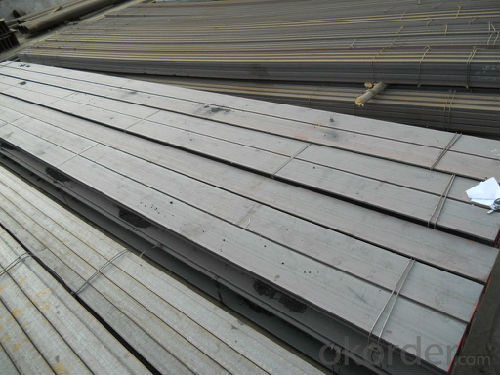
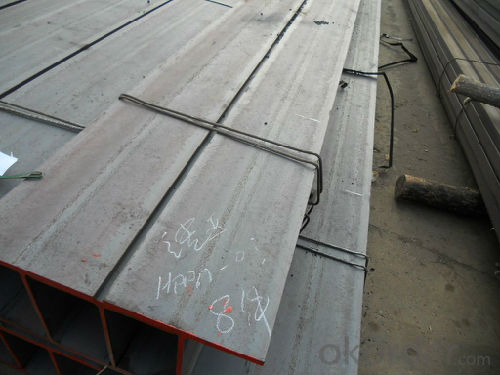
*If you would like to get our price, please inform us the size, standard/material and quantity. Thank you very much for your attention.
- Q: Can steel H-beams be used in airport hangar or aircraft maintenance facilities?
- Airport hangars or aircraft maintenance facilities can indeed utilize steel H-beams. These beams possess versatility as structural elements, providing an exceptional strength-to-weight ratio and capacity for bearing loads. Their usage is prevalent in construction endeavors that necessitate expansive spaces, such as aircraft hangars and maintenance facilities. The H-shaped configuration of these beams bestows them with structural stability and rigidity, rendering them suitable for supporting substantial loads and enduring the dynamic forces associated with aircraft operations. Moreover, steel H-beams can be conveniently fabricated and installed, enabling efficient construction and customization to cater to specific design requisites. In summary, due to their strength, durability, and versatility, steel H-beams are an esteemed choice within the aviation industry.
- Q: What are the different methods of lifting and installing steel H-beams?
- There are several methods of lifting and installing steel H-beams, depending on the specific requirements of the project and the available equipment. Some of the common methods include: 1. Crane: The most common and widely used method is using a crane to lift and install H-beams. Cranes come in various sizes and capacities, allowing for efficient and precise placement of beams at the desired location. Depending on the size and weight of the H-beam, different types of cranes such as mobile cranes or tower cranes may be used. 2. Forklift or telehandler: For smaller and lighter H-beams, a forklift or telehandler may be utilized. These machines have forks or lifting attachments that can be adjusted to fit the width of the beam. They provide a versatile and cost-effective solution for lifting and installing beams in tight spaces or on uneven terrain. 3. Hydraulic jacking system: In situations where there is limited access or overhead clearance, a hydraulic jacking system can be employed. This method involves lifting the beam incrementally using hydraulic jacks and inserting shims or temporary supports until the desired height is reached. The process is repeated until the beam is properly installed. 4. Skidding or rolling: This method is suitable for long H-beams or when a crane is not available. It involves using rollers or skids to gradually move the beam horizontally into position. This method requires careful planning and precise coordination to ensure the beam is aligned properly during the installation process. 5. Welding or bolting: Once the H-beams are lifted and in position, they need to be secured to the supporting structure. This can be achieved through welding or bolting, depending on the structural requirements and design specifications. Welding is a permanent method that provides a strong connection, while bolting allows for easy disassembly if required. It is important to note that proper safety measures should be followed during the lifting and installation of steel H-beams. This includes ensuring the equipment is in good working condition, using appropriate slings, chains, or lifting devices, and adhering to relevant safety guidelines and regulations. Additionally, the specific method chosen will depend on factors such as the size and weight of the H-beams, site conditions, and project constraints.
- Q: Are steel H-beams resistant to chemical exposure?
- The resistance of steel H-beams to chemical exposure is generally high. Steel is renowned for its durability and strength, which grants it resistance against numerous chemical substances. However, the level of resistance may vary depending on the specific chemicals and duration of exposure. Typically, steel H-beams can endure exposure to common chemicals found in industrial and construction environments, including oils, solvents, acids, and alkalis. Moreover, they exhibit resistance to atmospheric corrosion, making them advantageous for outdoor applications. Nonetheless, it is crucial to acknowledge that extended exposure to highly corrosive chemicals or extreme conditions can still cause detrimental effects on steel. Substances like strong acids or bases, aggressive salts, or highly oxidizing agents can induce corrosion or degradation over time. To ensure optimal resistance to chemical exposure, seeking advice from professionals or experts in the field is advisable. They can offer guidance regarding the specific chemicals involved and suggest suitable protective coatings or treatments for the steel beams.
- Q: What is the weight-bearing capacity of steel H-beams?
- The weight-bearing capacity of steel H-beams varies depending on their size, shape, and specifications. Generally, H-beams are designed to support heavy loads and have high weight-bearing capacities. It is recommended to consult engineering tables or contact a structural engineer to determine the specific weight-bearing capacity of a particular steel H-beam.
- Q: How do steel H-beams perform in areas with high humidity and saltwater exposure?
- When steel H-beams are exposed to high humidity and saltwater, they may corrode and weaken over time. However, their performance can be improved by properly protecting them against corrosion. One way to achieve this is by applying protective finishes or galvanizing the steel H-beams. These coatings create a barrier between the steel and the corrosive elements, minimizing the risk of rust formation. It is important to regularly inspect and maintain the steel H-beams to promptly identify and address any damage or deterioration. By taking these precautions, the steel H-beams can endure high humidity and saltwater exposure reliably and durably.
- Q: Can Steel H-Beams be used in modular or prefabricated construction?
- Modular or prefabricated construction can utilize Steel H-Beams effectively. These H-Beams are frequently employed in construction projects owing to their robustness, endurance, and versatility. They offer exceptional structural support and can endure substantial loads, making them highly suitable for modular or prefabricated construction that necessitates swift and efficient assembly. In these construction methods, Steel H-Beams are often used as columns, beams, or trusses, providing a sturdy and stable framework for the modular components. Moreover, their standardized sizes and uniform shape make them effortless to transport and assemble on-site, further augmenting the efficiency of modular or prefabricated construction. In conclusion, due to their strength, adaptability, and ease of installation, Steel H-Beams are widely favored in this type of construction.
- Q: Can Steel H-Beams be used in convention center or exhibition hall construction?
- Yes, Steel H-Beams can be used in convention center or exhibition hall construction. They are commonly used in such projects due to their high strength, durability, and ability to support heavy loads. Steel H-Beams provide structural integrity and can be easily fabricated and installed, making them a reliable choice for large-scale construction projects like convention centers and exhibition halls.
- Q: How do steel H-beams perform in high wind areas?
- Steel H-beams have gained a reputation for possessing exceptional strength and durability, making them a favored option for construction in regions with high wind conditions. These beams are specifically designed to withstand extreme weather, including powerful winds, by providing a sturdy and stable framework for buildings and structures. The structural design of steel H-beams allows for the efficient distribution of wind load throughout the entire structure, which minimizes the potential for any damage. The unique shape of the H-beam enables it to bear heavier loads, as it can better resist the bending and twisting forces caused by high winds. This ensures that the beams remain stable, preventing any structural failures or collapses. Moreover, steel H-beams are commonly crafted from high-strength steel alloys, which further enhances their ability to endure high winds. These alloys possess superior tensile strength and elasticity, enabling the beams to flex and absorb the energy from wind gusts without permanently distorting or fracturing. This flexibility aids in dissipating the force of the wind and reducing overall stress on the structure. Additionally, steel H-beams are frequently installed as part of a comprehensive structural system that incorporates other components, including bracing, connectors, and fasteners. These elements work together to enhance the performance of the beams in high wind regions. Properly engineered connections and bracing systems effectively transfer the wind load to the foundation, ensuring the overall stability and integrity of the structure. In conclusion, steel H-beams are well-suited for regions with high wind conditions due to their strength, rigidity, and durability. Their efficient load distribution capabilities, high-strength alloys, and compatibility with other structural components make them a reliable choice for buildings and structures in areas prone to strong winds.
- Q: Are steel H-beams susceptible to corrosion?
- Yes, steel H-beams are susceptible to corrosion. Steel is primarily made from iron, which is prone to oxidation when exposed to moisture and oxygen. This oxidation process leads to the formation of iron oxide, commonly known as rust. Corrosion can occur on the surface of the H-beams, as well as within the beam itself if moisture is trapped inside. However, the susceptibility to corrosion can be reduced through various preventive measures such as applying protective coatings, galvanizing, or using stainless steel H-beams. Regular maintenance and inspections are also essential to identify and address any signs of corrosion promptly.
- Q: What are the different grades of steel used in H-beam manufacturing?
- H-beam manufacturing commonly utilizes various grades of steel. Examples of these grades are A36, A572 Gr 50, A992, among others. A36, a low carbon steel, is frequently employed in construction projects due to its versatility and cost-effectiveness. It possesses a minimum yield strength of 36,000 psi, making it suitable for general structural purposes. A572 Gr 50, on the other hand, is a high-strength, low alloy steel that surpasses A36 in terms of yield strength. It is commonly used in construction and structural applications where weight and strength play crucial roles. This steel grade has a minimum yield strength of 50,000 psi. A992, another high-strength, low alloy steel, is widely utilized in H-beam manufacturing. It exhibits a higher yield strength than both A36 and A572 Gr 50, with a minimum of 50,000 psi. The superior strength and durability of A992 steel make it a popular choice for buildings and bridges. Manufacturers select these grades of steel based on the specific requirements of the H-beam, such as desired strength, weight, and cost. Each grade possesses distinct properties and characteristics, enabling manufacturers to choose the most suitable option for their particular application.
Send your message to us
GB Q235 Steel H Beam with High Quality 194*150*6.0mm
- Loading Port:
- China main port
- Payment Terms:
- TT or LC
- Min Order Qty:
- 40 m.t
- Supply Capability:
- 15000 m.t/month
OKorder Service Pledge
OKorder Financial Service
Similar products
Hot products
Hot Searches
Related keywords
